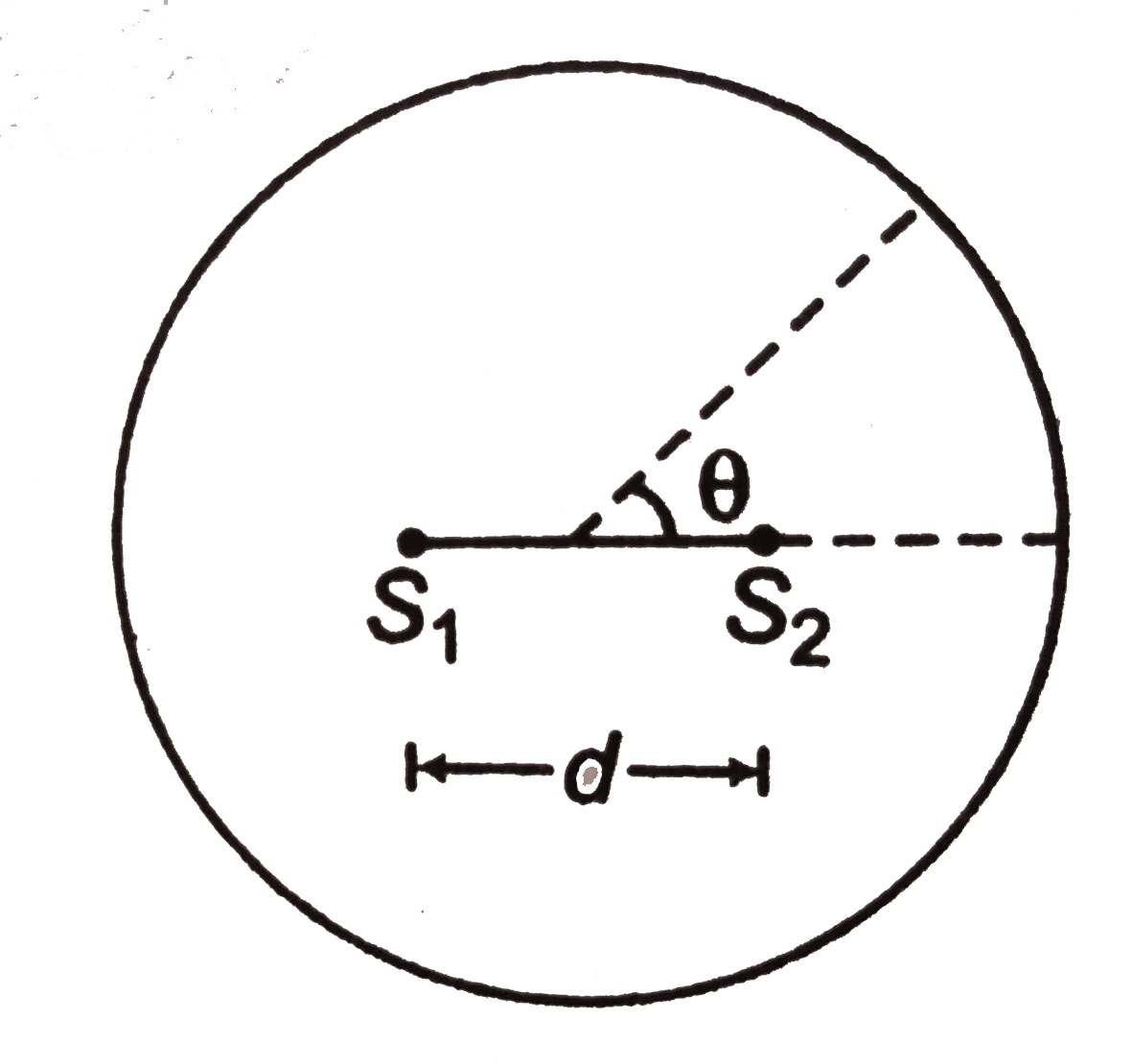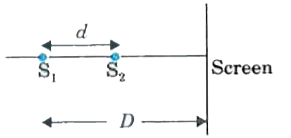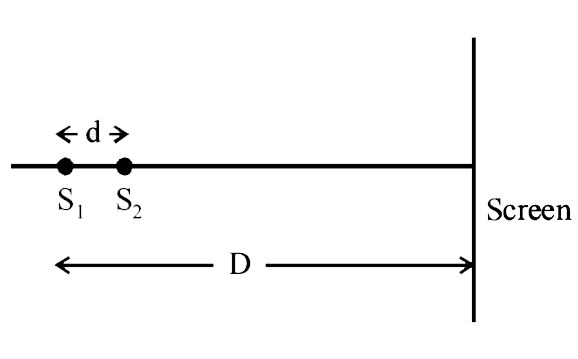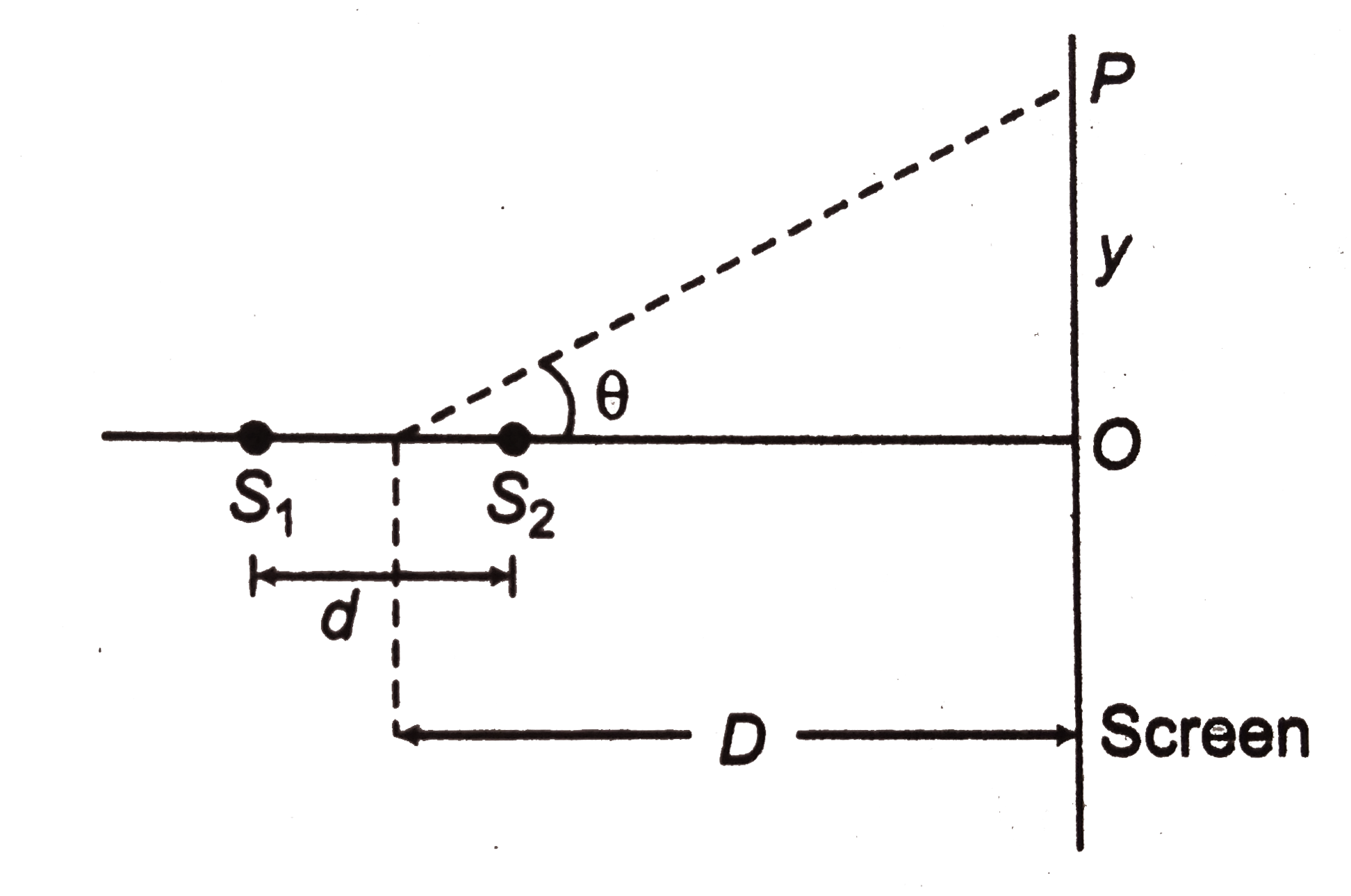There is a large circle (not a screen this time) around two coherent
sources and kept at a distance .

(a) Find total number of maximas on this circle.
(b) Four angular positions corresponding to third order maxima on this circle.
The correct Answer is:A, B, C, D
(a) Since, radius of circle , therefore we can apply
Corresponding to given figure
at
at
Corresponding to third order maxima, At )
or
or
Four angular positions are as shown in figure.
Topper's Solved these Questions
- INTERFERENCE AND DIFFRACTION OF LIGHTBOOK - DC PANDEYCHAPTER - INTERFERENCE AND DIFFRACTION OF LIGHTEXERCISE - Example Type 4
1 Videos
- INTERFERENCE AND DIFFRACTION OF LIGHTBOOK - DC PANDEYCHAPTER - INTERFERENCE AND DIFFRACTION OF LIGHTEXERCISE - Example Type 5
1 Videos
- INTERFERENCE AND DIFFRACTION OF LIGHTBOOK - DC PANDEYCHAPTER - INTERFERENCE AND DIFFRACTION OF LIGHTEXERCISE - Example Type 3
2 Videos
- GRAVITATIONBOOK - DC PANDEYCHAPTER - GRAVITATIONEXERCISE - All Questions
120 Videos
- MAGNETIC FIELD AND FORCESBOOK - DC PANDEYCHAPTER - MAGNETIC FIELD AND FORCESEXERCISE - Medical entrance s gallery
59 Videos
Similar Questions
In the YDSE apparatus shown in figure, d<<D and d=6λ. Find

(a) total number of maximas and minimas on the screen .
(b) two y-coordinates corresponding to third order maxima.
View SolutionIn the YDSE apparatus shown in figure, d<<D and d=6λ. Find

(a) total number of maximas and minimas on the screen .
(b) two y-coordinates corresponding to third order maxima.
View Solution
Knowledge Check
Two coherent point sources S1andS2 are separated by a small distance 'd' as shown. The fringes obtained on the screen will be :
 Astraigth linesBsemi-circleCconcentric circlesDpoints
Astraigth linesBsemi-circleCconcentric circlesDpointsTwo coherent point sources S1 and S2 are separated by a small distance d as shown. The fringes obtained on the screen will be
 ApointsBstraight linesCsemi-circlesDconcentric circles
ApointsBstraight linesCsemi-circlesDconcentric circlesAssertion: Distance between two coherent sources S1andS2 is 4λ. A large circle is drawn around these sources with centre of circle lying at centre of S1andS2. There are total 16 maxima on this circle.
Reason: Total number of minimas on this circle are less, compared to total number of maximas.A(a)If both Assertion and Reason are true and the Reason is correct explanation of the Assertion.B(b)If both Assertion and Reason are true and the Reason is not the correct explanation of the Assertion.C(c) If Assertion is true, but the Reason is false.D(d) If Assertion is false, but the Reason is true.
Two coherent point sources S1 and S2 are separated by a small distance d as shown. The fringes obtained on the screen will be

View SolutionTwo coherent point sources S1 and S2 are separated by a small distance d as shown. The fringes obtained on the screen will be

View SolutionIn the set up shown in figure dltltD and d=4lambda, find.

(a) total number of maximas and minimas on the screen
(b) y-coordinates corresponding to minima nearest to O.
View SolutionIn the set up shown in figure dltltD and d=4lambda, find.

(a) total number of maximas and minimas on the screen
(b) y-coordinates corresponding to minima nearest to O.
View SolutionTwo coherent sources S1 and S2 are separated by a small distance d. The fringes obtained on the screen will be:

View Solution
